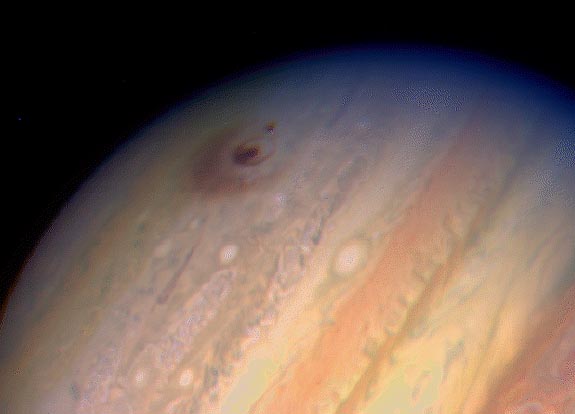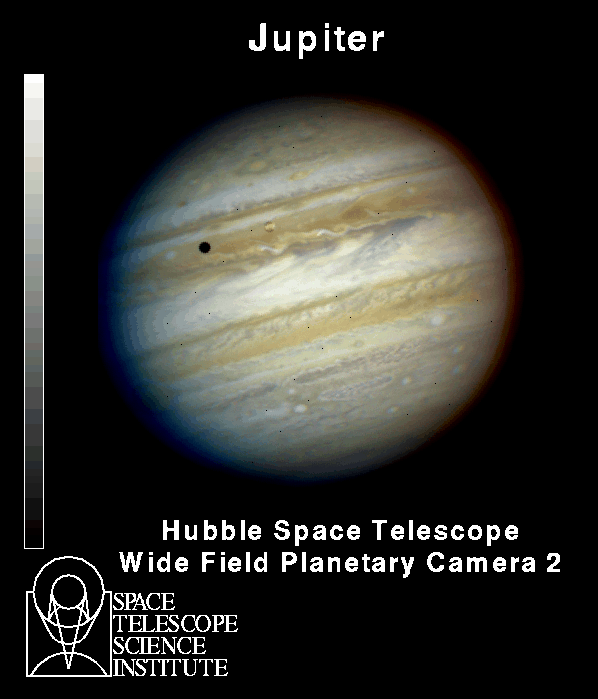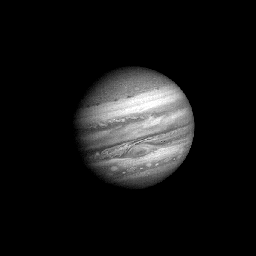Yesterday, we started our goodbyes to Hubble's outgoing camera, WFPC2. It was literally 16 years ago that they first installed this workhorse onto the space telescope:

As I write this, the space shuttle Atlantis is up there right now, on a mission to install a new, superior camera. Welcome to part 2 of the five greatest achievements that this camera has ever snapped.

This image, above, is the highest resolution image of Jupiter ever taken from a telescope on Earth. And it isn't too shabby. But let's compare it with what the WFPC2 has done for the great gas giant. First, let's take a look at what Jupiter looks like -- when there's nothing special going on -- from this camera.

And now let's take a gander at some of the special events that have been captured by this workhorse. There was 1994, when Comet Shoemaker-Levy crashed into Jupiter.

The telescope followed up the impact by recording a series of images, watching how the impact site changed over time.

There was 1997, when Jupiter's closest moon, Io, had a volcanic eruption caught by this camera! Here's Jupiter and Io, caught together by the Hubble Space Telescope:

And here's a close-up of Io, during the eruption, also caught by the Hubble Space Telescope.

And finally, here are a series of images showing Jupiter's great red spot eating a smaller spot that had developed on the planet! You can see three red spots in the first image, three in the second, and two (plus a tiny remnant) in the third! (And, as always, click to enlarge.)

Do you realize how amazing this is? The same telescope with the same camera that told us how many galaxies are in the Universe can tell us what storm systems on Jupiter are doing! These images from WFPC2 that I've shown you are among the best ever taken of Jupiter, and better than anything we've ever done from Earth.
In all fairness, though, we've actually gotten a better image of Jupiter than what the Hubble Space Telescope with WFPC2 can get us. But we had to go to Jupiter to get it! It just wouldn't be fair if I didn't leave you with my favorite time-lapse animation of Jupiter, taken in 1979 by the Voyager I spacecraft.

Enjoy, and come back tomorrow for Part 3!
|

Lovely pictures, thanks!
Ethan
I visit your blog daily. It's wonderful and informative. While I can read english very proficiently, that is not the case when writing. That's why this one could be my only post. But I dare to write it for telling you that maybe there are a lot of people who want to encourage you to continue your effort because, for the time being we don't see a better alternative. And maybe it's due to the fact that there is none because yours is the best.
Sweet! Excellent post, as always! Jupiter is one of my favorite objects in the sky. Maybe sometime you can do a post just on the mighty marble in the night sky?
Wow, how have I never seen that animation of Jupiter before? Awesome.
Thanks Dr. Siegel for this great blog!